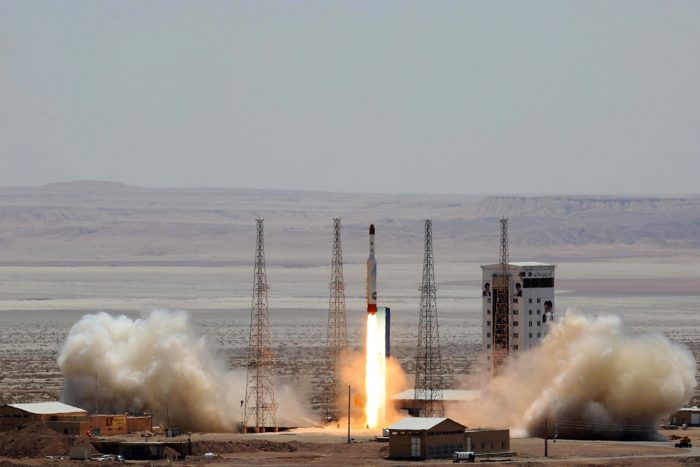
The Iranian regime’s recent Missile test, a breach of 2231 UN resolution.
An op-ed in US news outlet The Hill highlighting the ways that the Iranian regime has defied the JCPOA nuclear deal. “Details an effort to build five nuclear weapons and prepare an underground nuclear test site in the early 2000s, has revealed an unpleasant truth: Iranian regime has been in violation of the spirit, if not the letter, of the nuclear Non-Proliferation Treaty (NPT).”
The People’s Mujahedin Organisation of Iran (MEK) has long maintained that the Iranian regime was not acting in compliance with the agreement signed with the P5+1 community. It has exposed key details of the regime’s nuclear program and missile development activities.
Now, what the Iranian opposition has long suspected, has been confirmed by the US State Department. US Secretary of State Mike Pompeo revealed in an arms compliance report that it had serious misgivings over the regime’s retention of the archives. The department questioned whether the Iranian regime always intended to resume its nuclear development program.
A recent trove of documents, totaling more than 55,000 printed pages revealed that the Iranian nuclear program did not end in 2015. It also revealed that the program is much further along than the US and its allies believed.
A Flawed Deal
Many of the issues stem from the terms of the Iranian nuclear deal negotiated in 2015. “Instead of demanding a nuclear standard for Iran that the International Atomic Energy Agency (IAEA) has applied to other countries… many are turning a blind eye to Tehran’s dangerous transgressions,” the Hill published.
#Iran Regime's Nuclear Deceptionhttps://t.co/DfZUwRdx33 pic.twitter.com/EfHOmIoewr
— NCRI-FAC (@iran_policy) February 28, 2019
Under the terms of the agreement, the IAEA was not permitted to carry out inspection of Iranian nuclear sites, including sites used in the Ahmad Plan, which the MEK revealed was a cornerstone of the regime’s pursuit of nuclear weapons.
“Why would a country that claims its nuclear program is permanently peaceful maintain such information and equipment?” The answer is that the regime clearly never abandoned its nuclear ambitions and closed its development sites.
Instead of ending it [Its nuclear program], Iran reoriented its nuclear weapons program to survive as a smaller, more camouflaged one,” the Hill writes.
Its announcement that it would no longer abide by the terms of the JCPOA surprised nobody in the opposition. It merely confirmed that the regime had not set aside its ambitions of obtaining the nuclear weapon and was now openly prepared to resume its missile development activities.
Different Treatment
The Hill op-ed questioned why the new revelations are being differently to previous findings that states violated international non-proliferation agreements. When the Swiss government was discovered to be in possession of nuclear weapons designs, it was forced to destroy them under the close supervision of the IAEA.
When a similar situation occurred in Libya, the IAEA took possession of the documents. The 55,000-page-trove is far larger than the designed the Libya and Switzerland possessed. So why the muted response?
The only solution to resolve #Iran’s nuclear crisis is regime change by the Iranian ppl &their resistance. #IranDeal pic.twitter.com/KFHRCR86rW
— Maryam Rajavi (@Maryam_Rajavi) July 24, 2015
“More robust IAEA inspections are obviously required, with inspectors gaining access to the documents, relevant facilities, equipment, and key personnel mentioned in the seized part of the archive,” the Hill argues. “Iran should not destroy any information or equipment, or alter locations before the IAEA has completed its investigations,” it added.
Not carrying out this oversight would undermine the international rule-based order and set a dangerous precedent for other nations with nuclear aspirations. It also undermines the IAEA and its international credibility.
“Non-action is not an option,” the Hill concludes. The stakes are too high.
Staff writer
